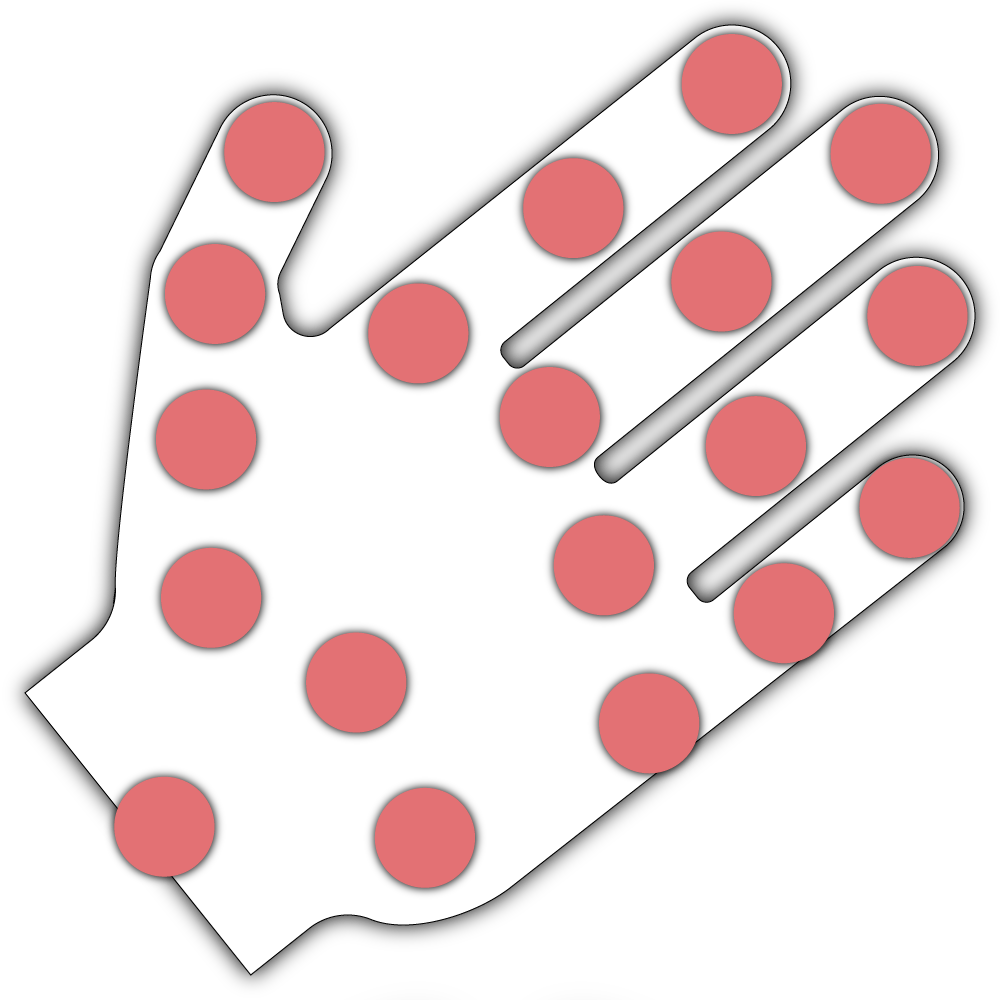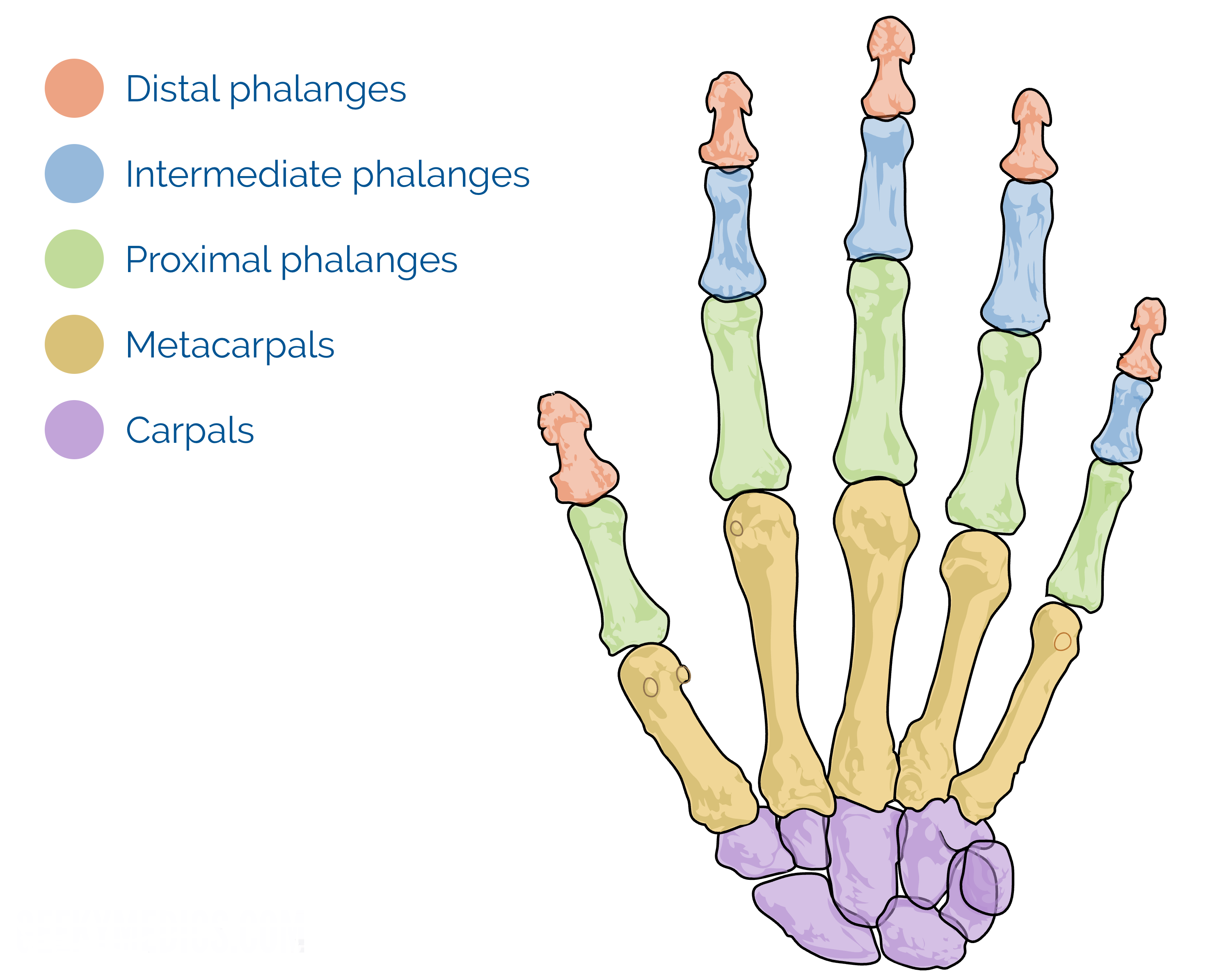
Hand Tracking Data
Hand tracking data is outputted into two distinct CSV files: ParticipantLeftHandData.csv, which tracks all movements and interactions of the left hand, and ParticipantRightHandData.csv, which tracks those of the right hand. The data is centralized, meaning the same data is recorded for each joint on both hands. For every joint, ![]() tracks its position and rotation along the X, Y, and Z axes and detects what the joint is touching.
tracks its position and rotation along the X, Y, and Z axes and detects what the joint is touching.
For example, in ParticipantLeftHandData.csv, you will find columns such as LeftHand_IndexTip_Position_X, LeftHand_ThumbMetacarpal_Rotation_Y, or LeftHand_RingDistal_Touching. The same columns appear in ParticipantRightHandData.csv for the right hand (e.g., RightHand_IndexTip_Position_X, RightHand_ThumbMetacarpal_Rotation_Y, ...).
Since the data capture for each hand and hand joint is identical, we’ve created a generalized explanation table below. It outlines the hand data, using a placeholder ([joint]) for each hand joint instead of listing them individually.
For a visual reference to the exact locations of the tracked hand joints on the participant, check out this diagram:
ParticipantRightHandData.csv, making it easier to understand what each column is tracking. Explore the table below for detailed information on each column's data type and format, as well as an example data and a short description.The thumb consists of three main bones: the metacarpal bone which connects to the wrist" + "the proximal phalanx which is the bone at the base of the thumb, and the distal phalanx, " + "which is the tip of the thumb.
